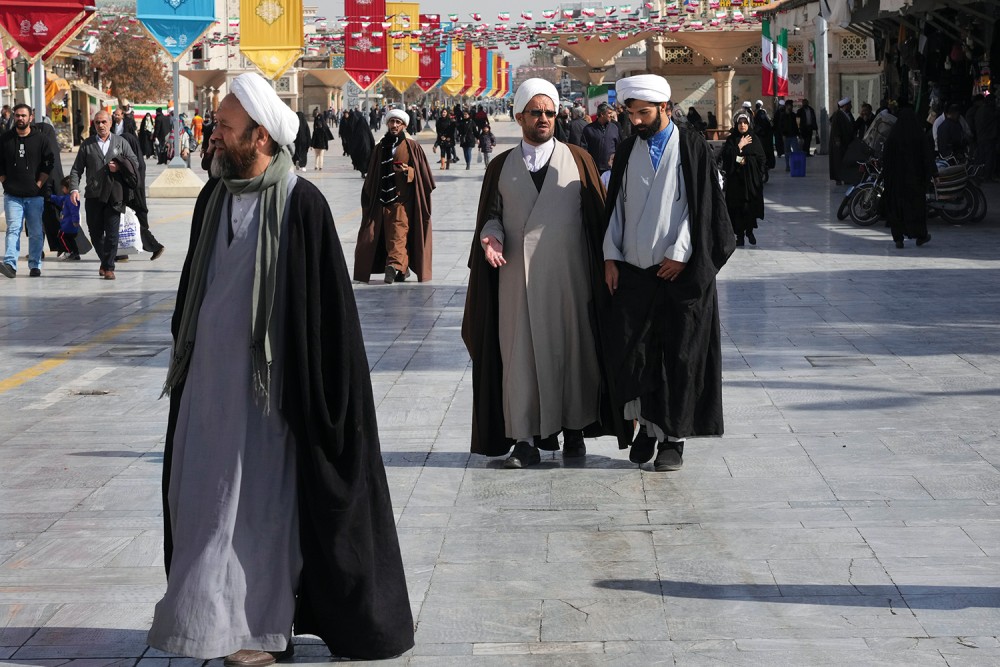The slow work of dialogue
For 20 years, Mennonite scholars from North America and Shi’a scholars from Iran have met periodically to build bridges.

Muslim clerics walk in front of the Fatima Masumeh Shrine in the city of Qom, Iran, about 80 miles south of the capital, Tehran, in February 2023 (AP Photo / Vahid Salemi).
“They’re just going to become a part of the propaganda machine,” the Iranian hostel manager in exile told my son in Antalya, Turkey, in the days before I left to observe a Shi’a-Mennonite dialogue group convening in Qom, Iran. He said this while pretending to bang his head against a doorframe.
The problem this man was articulating couldn’t really be overstated. I arrived in Iran with a small group of North American Mennonite scholars at a moment of incredible volatility. Held in June 2023, this was the eighth installment of a more than 20-year effort to build relationships and meaningful discourse with their Iranian counterparts. In the months leading up to the departure date, more than 500 Iranian protesters had been killed in state-sponsored violence that rocketed across the country.
The protests began on September 13, 2022, when a 22-year-old Kurdish woman named Mahsa Amini was arrested by morality police officers for violating Iran’s headscarf law. She died in custody three days later. Protests spread to more than 80 cities. On September 30, protesters gathered in front of a police station near the prayer site of the Great Mosalla of Zahedan. Security forces opened fire on them and later on Friday worshipers; the day has become known as Bloody Friday. On May 19, just 27 days before the Mennonites’ arrival in Qom, three men were executed by the government in response to the protests. Iranian society had been rocked, and the government was scrambling to regain control of the narrative. It wasn’t clear how the Mennonite group would be used.





